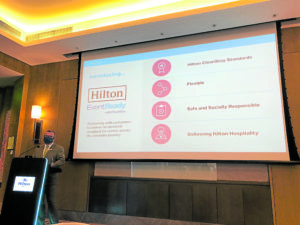“Commit a crime, and the earth is made of glass. Commit a crime, and it seems as if a coat of snow fell on the ground, such as reveals in the woods the track of every partridge and fox and squirrel and mole,” said American essayist and poet Ralph Waldo Emerson.
“Some damning circumstance always transpires.”
In Mediatrix Carungcong’s case, she had been chatting with her nieces when she found out that her brother-in-law, William Sato, fraudulently secured the signature and thumbmark of her deceased mother, who was then blind and of advanced age, on a Special Power of Attorney (SPA) in relation to the sale of some properties belonging to her intestate estate.
As the administratix of her mother’s intestate estate, Mediatrix filed a complaint against William before the city prosecutor. Thereafter, the city prosecutor filed before the Regional Trial Court (RTC) an Information supposedly for the crime of Estafa under Article 315, paragraph (a) of the Revised Penal Code.
This was the case of Intestate Estate of Manolita Gonzales Vda. De Carungcong v. People, in which the Supreme Court held, among others, that: (a) a perusal of the Information would show that William was actually charged with the complex crime of estafa through falsification of public documents; and (b) he may be held criminally liable for this charge despite being the son-in-law of Mediatrix’s deceased mother, which could have otherwise exculpated him therefrom under Article 332 of the Revised Penal Code.
According to the Supreme Court, William was actually charged with this complex crime since based on the allegations in the Information, he had resorted to falsifying public documents—that is, the SPA and deeds of sale, as a necessary means to commit estafa. Therefore, he is not covered by Article 332 of the Revised Penal Code.
Under this Article, the offender shall be freed from criminal liability, but shall remain civilly liable, by virtue of his relationship to the offended party. To be sure, this Article covers the following offenders: (a) spouses, ascendants and descendants, or relatives by affinity in the same line; (b) the widowed spouse with respect to the property which belonged to the deceased spouse before the same shall have passed into the possession of another; and (c) brothers and sisters and brothers-in-law and sisters-in-law, if living together.
In this case, the Supreme Court noted that this Article includes parents-in-law, stepparents and adopted children. Moreover, this Article still applies to a relationship by affinity between the surviving spouse and the kindred of the deceased spouse, even after the latter’s death, and whether their marriage has produced children.
This Article, however, may only be invoked in cases involving theft, simple estafa (or swindling), and malicious mischief, which are among those classified as crimes against property in the Revised Penal Code.
Theft is committed when the following elements concur: (a) there is taking of personal property; (b) the property belongs to another owner; (c) the taking away is done with intent to gain; (d) the taking away was done without the owner’s consent; and (e) the taking away is accomplished without violence or intimidation against the person or force upon things.
Simple estafa is committed by, among others: (a) any person who, pretending to be an owner of real property, shall convey, sell, encumber or mortgage it; and (b) any person who, knowing that real property is encumbered, shall dispose of the same, although such encumbrance be not recorded.
Meanwhile, malicious mischief is committed by any person who shall deliberately cause the property of another any damage not falling within the terms of the chapter on arson and other crimes involving destruction under the Revised Penal Code.
Article 332, however, does not apply in the Carungcong case, where the complex crime actually charged does not only involve the violation of the private offended party’s property rights, such as in theft, simple estafa and malicious mischief, but a paramount public interest in the integrity and presumed authenticity of public documents.


